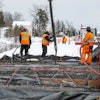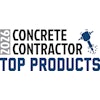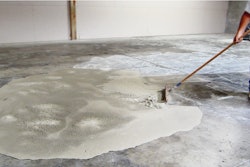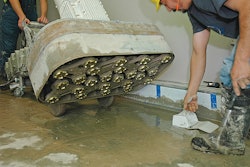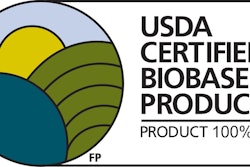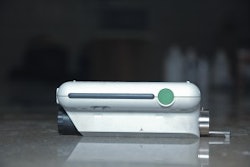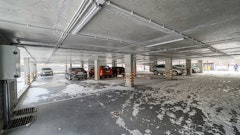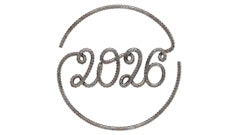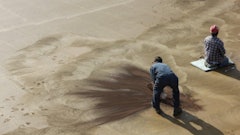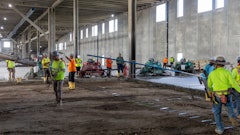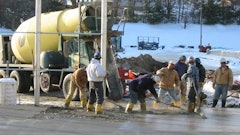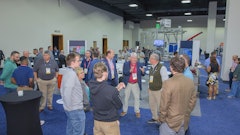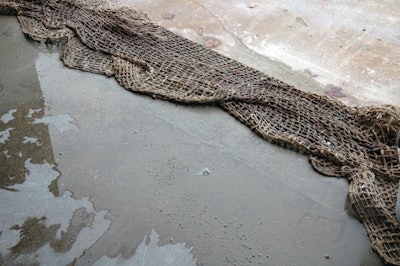
Is concrete slurry a hazardous waste and does it require special handling? In some cases yes, in many cases no. In fact, under certain conditions the International Grooving and Grinding Association advocates spreading concrete slurry in the area between the shoulder and the bottom ditch along roadways. One fact is very clear, the subject can be confusing and governed by federal, state and/or local municipalities.
In this article we will look at what could make concrete slurry hazardous and ways to properly handle it.
Laws and regulations
Under the Code of Federal Regulation the EPA is responsible for enforcing Title 40, Protection of the Environment. Within this title there are 33 volumes and over 1,000 parts. Part 261 is the Identification and Listing of Hazardous Waste. If you are inclined to read any part of this section I found Subpart C Characteristics of Hazardous Waste which includes 261.20 – 261.24 the most informative. Subpart D is interesting, but if you decide to take on Subpart D drink a lot of coffee first.
There are four factors that determine if a material is considered hazardous — ignitability, corrosivity, reactivity and toxicity. If you want to know the details of how each is determined, read Subpart C. Research commissioned by the Concrete Sawing and Drilling Association (CSDA), the International Grooving and Grinding Association (IGGA) and California Department of Transportation concluded that concrete slurry is only hazardous when its pH is at or above 12.5, making it corrosive. It should be noted that the settled particulate layer may have a pH over 12.5 and considered corrosive whereas the overlaying water may in fact be below 12.5 categorizing it as non-corrosive.
You might think the simple solution would be to treat the slurry with an acid based solution to convert it to a non-corrosive material — case closed. If it were only that easy!
 Contractors will need to perform regular pH and pollutant testing on concrete slurry created during polishing, grinding and sawing.
Contractors will need to perform regular pH and pollutant testing on concrete slurry created during polishing, grinding and sawing.
There is also a set of federal laws called the United States Code (U.S.C.). In this set of laws is the Clean Water Act (CWA) passed by the US Congress who gave the EPA the responsibility to enforce. Regulations relating to implementation of The Clean Water Act can be found in the U.S.C., Title 33, Chapter 26 and throughout parts 40 CFR. The goal of the CWA is to protect and maintain the physical and biological integrity of the nation's waterways. If anything you discharge could find its ways into any waterway you must obtain a permit from The National Pollutant Discharge Elimination System (NPDES) program. Details can be found in the Clean Water Act, Section 402.
If the slurry falls within pH EPA safe limits and it has been determined in past studies as nonhazardous, what's the big deal? Under the Clean Water Act sediment is considered a pollutant, total suspended solids (TSS). Sediment is considered the most common pollutant in rivers, streams and reservoirs and causes $16 billion in damage a year. Sediment clouds water preventing aquatic plants adequate sunlight to grow, clogs the gills of fish and reduces the depth of waterways.
Not to be the bearer of bad news there is one last issue that needs to be addressed. So far we have discussed no- polluted concrete. Not in all situations are we grinding, honing and polishing virgin concrete. Floors being processed may at one time been subjected to hazardous materials such as oils, glues, mastic, fertilizers, solvents, and the list goes on.  Natural gravitation methods of slurry separation simply allow natural separation of the water and particulate in holding containers such as 55-gallon drums, lined dumpsters, sediment tanks, filter boxes and weir systems.
Natural gravitation methods of slurry separation simply allow natural separation of the water and particulate in holding containers such as 55-gallon drums, lined dumpsters, sediment tanks, filter boxes and weir systems.
Management and disposal plan
Now that we have identified the potential hazards of slurry, let's look at how we can properly manage and dispose of it.
- Have a Best Management Practice plan in writing. (This article may help you write a plan.)
- In addition to EPA regulations, understand state and local laws that may apply to disposal.
- Conduct an initial assessment to help determine if the concrete contains any potential pollutants.
- Determine how you will collect the slurry and store it. (For example, vacuums, auto scrubbers, 55-gallon drums, totes, lined dumpster, a pit in the ground, etc.)
- Conduct testing if you suspect the concrete contains pollutants.
- Conduct pH testing at scheduled intervals.
- Have a plan for accidental spills or leaks. (For example, the use of jute mesh, floc logs, absorbents such as socks, pads and solidifiers.)
- Dispose of within EPA, state and/or local regulations.
Equipment and products for containment
 The use of a slurry solidification product, such as the Slurry Slayer, will aid in removing slurry off the jobsite. Photo is before Slurry Slayer.
The use of a slurry solidification product, such as the Slurry Slayer, will aid in removing slurry off the jobsite. Photo is before Slurry Slayer.
If the material is nonhazardous, including pH, it can be disposed of directly onto the ground as long as there is no chance of the slurry particulate entering any form of waterway. If waterways present an issue, the slurry can be processed by separating the water and particulate.
Separation is performed mechanically or through natural gravitation. Mechanical separation uses a filter press, centrifugal force or drum separator. Mechanical systems remove the majority of water leaving the particulate damp. Natural gravitation methods simply allow natural separation of the water and particulate in holding containers such as 55-gallon drums, lined dumpsters, sediment tanks, filter boxes and weir systems. Flocculants will make particulate flock and stick together making the particulate heavier speeding up the separation process. The clear water on the surface can then be removed from the top.
The use of woven or nonwoven filter material may also be used to line holding containers. This will allow for the majority of particulate to be contained and allow the water to filter through by means of gravitation. The clear water by any means can be recycled and used in your operation, disposed of on the ground or in a sanitary sewer drain. The particulate will then have to be disposed of separately. Gravitational methods leave the slurry very wet like drywall mud. If left over time it will continue to dry out. The use of a product that will solidify the slurry can be used to turn it into a gelatin-like material for ease of transportation and easy disposal.
 The use of a slurry solidification product, such as the Slurry Slayer, will aid in removing slurry off the jobsite. Photo is after Slurry Slayer.
The use of a slurry solidification product, such as the Slurry Slayer, will aid in removing slurry off the jobsite. Photo is after Slurry Slayer.
If the slurry is considered hazardous only because it has a high pH, the slurry can be treated with an acid based solution to bring it within acceptable levels.
If the slurry is considered hazardous the particulate and water must all be disposed of so that it does not affect the environment. This may require the use of totally enclosed poly tanks or vacuum boxes, sealable 55-gallon drums or large lined dumpster filled a portion of the way to allow for transportation and removed off sight. Vacuum truck services may also be used to vacuum hazardous slurry out of holding containers and remove it from the site. Slurry solidification products may also be used to absorb the water within the slurry turning it into a gelatin material that will pass EPA required testing to allow it to be disposed of in a regular landfill.
For more information on required EPA testing search the internet for toxicity characteristic leaching procedure (TCLP) and paint filter test. If you feel daring you can dive back into 40 CFR to learn more on both these tests.
Many authorities view not having a Best Management Practice plan in place for handling concrete slurry as bad as committing a violation. Educate yourself on the regulations that apply in your area, familiarize yourself with the product available for slurry management, and implement your own Best Management Practice plan for concrete slurry.


